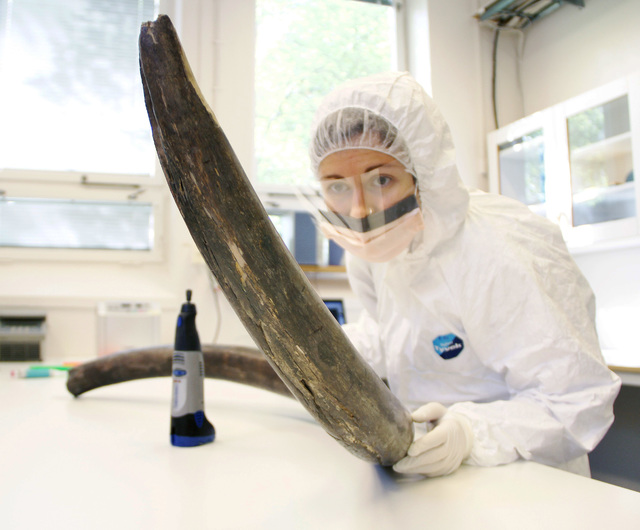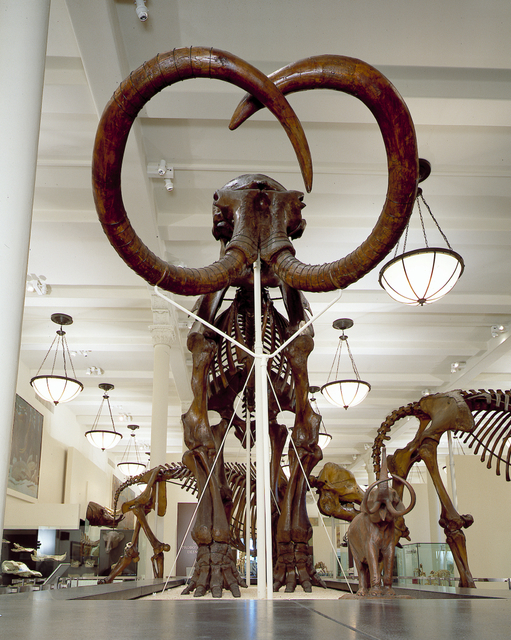NEW YORK — Scientists are getting their best look yet at the DNA code for the woolly mammoth, thanks to work that could be a step toward bringing back the extinct beast.
Researchers deciphered the complete DNA code, or genomes, of two mammoths. The new genomes are far more refined than a previous one announced in 2008.
One new genome comes from a mammoth that lived about 45,000 years ago in northeastern Siberia. The other comes from a creature that lived about 4,300 years ago on Russia’s Wrangel Island in the Arctic Circle.
The results are announced in a paper released Thursday by the journal Current Biology. The DNA was extracted from a tooth and a sample of soft tissue.
Woolly mammoths, which were about as big as modern African elephants, sported long curved tusks and thick hairy coats. They are the best-known species of mammoth, with information coming from frozen and often well-preserved carcasses in Siberia.
The Wrangel Island population was the last of the creatures to go extinct. Some scientists have suggested that mammoths could be created anew through genetic engineering, an idea not everybody favors.
Love Dalen (LOH’-vee dah-LEN’) of the Swedish Museum of Natural History in Stockholm, an author of the new study, said re-creating mammoths is not a goal of his research team. He also said it’s “very uncertain” that it’s even possible.
Still, he wrote in an email, “Our genomes bring us one critical step closer to re-creating a mammoth…. I think it would be cool if it could be done, but I’m not sure it should be done.”
One ethical drawback, he said, is that elephants would be used as surrogate mothers to carry the genetically engineered mammoth embryos. That species mismatch might lead to problems that cause the mothers to suffer, he said.
Hendrik Poinar of Canada’s McMaster University in Hamilton, Ontario, who is another study author, said the new work “gives us at least a blueprint to work from.”
Poinar said mammoths could be a welcome addition if re-introduced to the wild, but if they were made just for exhibition at zoos, “I don’t see any good in that at all.”









